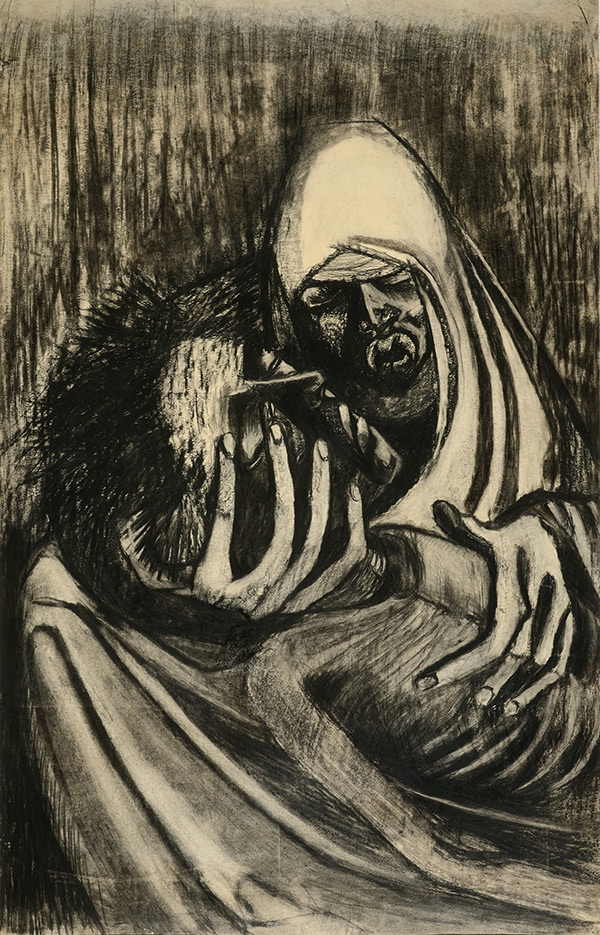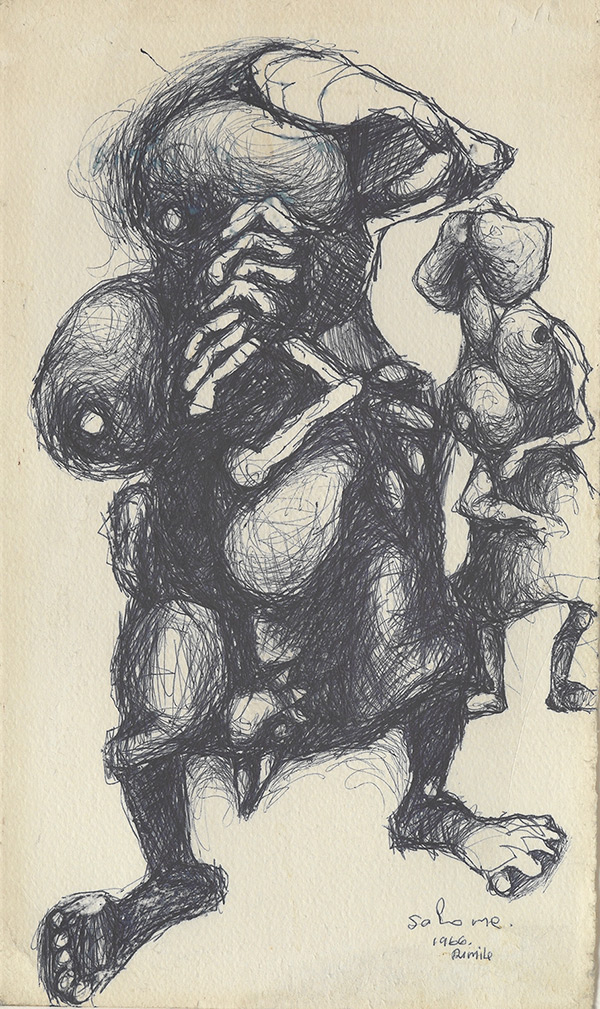Dumile Feni (1942 – 1991), A Couple Engaging (detail), date unknown, red koki pen on paper, 34 x 33 cm
A LUTA CONTINUA
In 2012, the African National Congress celebrated its centenary, and this in-house exhibition A Luta Continua | The Struggle Continues, was curated with that historic moment in mind.
This exhibition was not, in any direct sense, an historical record of leading political persons or particular political events. Instead, we focused on the broad theme of political struggle and its context of social life and labour.
Albert Adams (1930)
Pieta
1948
charcoal on paper
99 x 68.5cm
The Collection primarily features artworks that illustrate the achievement of South African artists, both historical and contemporary. Here, the exhibition extended from the 19th century artist, Frederick Timpson I’Ons, and others from the colonial era, to scenes of township life in the paintings of Ephraim Ngatane, Durant Sihlali and George Pemba, and in the photographs of Santu Mofokeng and David Goldblatt.
This was followed by expressions of social and personal predicament in the drawings of Dumile Feni, the prints of Cyprian Shilakoe, and in Julian Motau’s and Dorothy Kay’s studies of miners. More overtly political subject matter is dramatically depicted in Sam Nhlengethwa’s collage, in Harold Rubin’s drawings of the Sharpeville massacre and, photographically, in Ranjith Kally’s passbook burning and Jurgen Schadeburg’s Sophiatown removals.
Dumile Feni (1942 – 1991)
Gum Boot Dance
1965
charcoal on paper
40 x 40 cm
All of this work has a more or less directly descriptive dimension, but it is almost always imaginatively conceived, reflecting an often-intense personal response to scene or event. This is also evident, in different ways, in Jo Ractliffe’s Vlakplaas, David Goldblatt’s Cells, Paul Stopforth’s Detective and Tracy Rose’s Maq II, and also, selectively, in Diane Victor’s Disasters of Peace series.
This exhibition displayed the individuality, both in style and subject matter, of a range of South African artists – traditional and contemporary. Each work spoke for itself and to the occasion.



